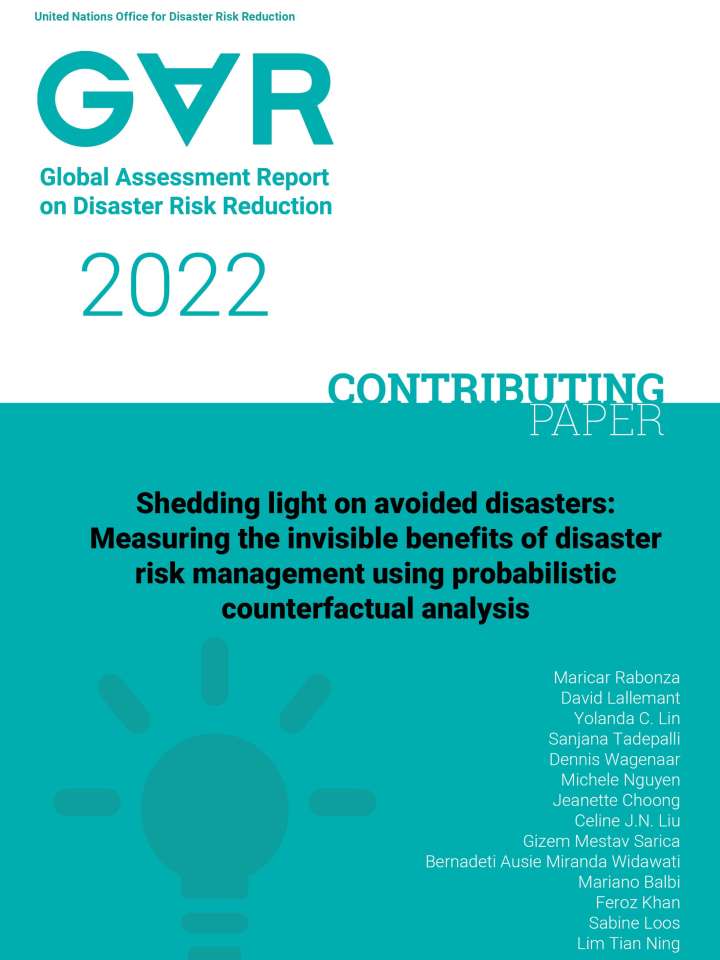Shedding light on avoided disasters: Measuring invisible benefits of disaster risk reduction using counterfactual probabilistic analysis
This contributing paper explores the use of probabilistic counterfactual analysis to calculate and highlight the ‘probabilistic lives saved’ from disaster risk management interventions, that would otherwise remain unnoticed. The goal of Disaster Risk Management (DRM) is to ensure that society continues to function, thrive, and recover quickly despite shocks arising from natural or human actions; to ensure, in short, that natural hazards do not become disasters. Success in the world of DRM means ’nothing happens,’ but this poses a dilemma towards recognising and incentivising successful DRM interventions since they are made invisible by the very nature of their success. How must successes be highlighted and learned from if they remain unseen? Likewise, how must policymakers be incentivised to make better risk-informed decisions when they are not credited for pro-active actions nor accountable for the consequences of doing nothing?
This study discusses four types of situations where successful DRM interventions are made invisible: (i) success made invisible in the midst of broader disaster, (ii) success made invisible by nature of the success, (iii) success made invisible due to yet unrealised benefits, (iv) success made invisible due to the randomness of the specific outcome. Thereafter, two case-studies are studied, a school seismic retrofit program in Nepal and a cyclone evacuation effort in India. An important conclusion that emerges from these studies is that the value of risk reduction interventions should not be judged on the basis of specific outcomes, but on the basis of a broader exploration of potential outcomes. The shift in focus from realised outcome to counterfactual alternative provides a framework to identify and learn from successes in DRM, and reward individuals and institutions who have displayed political bravery in committing to the implementation of DRM measures despite invisible benefits.
